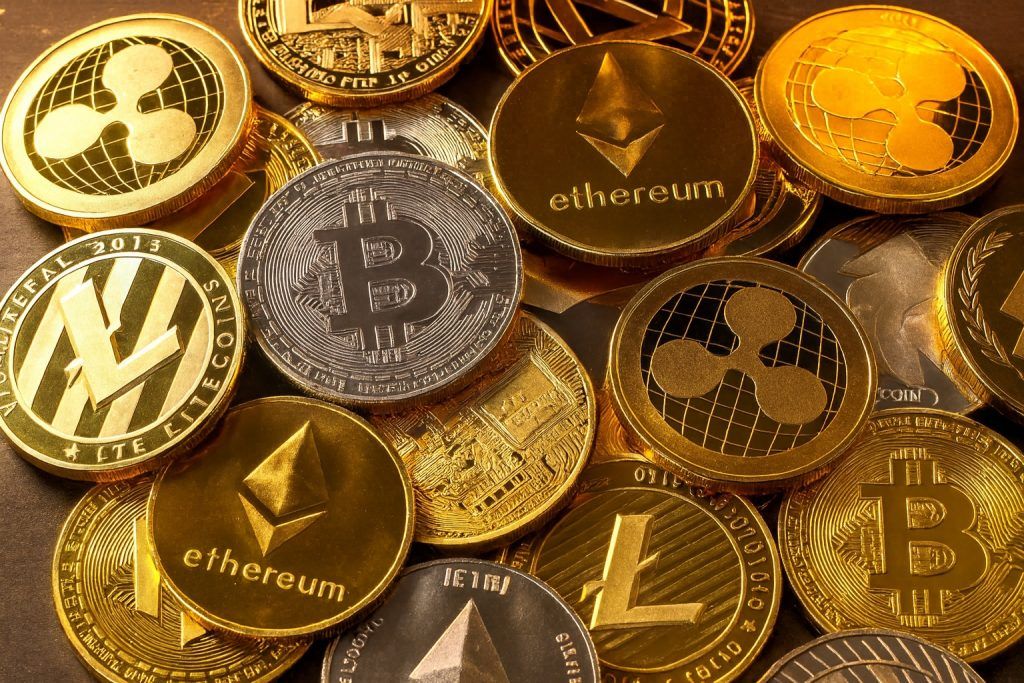Published: 22 November 2025 – Green energy weekly recap for Google News & Discover. This is informational, not investment advice.
Big Picture: Clean‑Energy Shares Cool After Huge 2025 Rally
After a blistering run earlier in the year, green energy stocks spent the week of 16–21 November 2025 digesting gains.
Data from ETFdb show major U.S.-listed clean‑energy ETFs all fell mid–single to low–double digits over the week ending 21 November:
- iShares Global Clean Energy ETF (ICLN): 1‑week return ‑4.68%, but still +35.8% over the past year. [1]
- Invesco WilderHill Clean Energy ETF (PBW): down 6.26% on the week, up 46.5% over 12 months. [2]
- First Trust NASDAQ Clean Edge Green Energy (QCLN): off 5.49% for the week, up 23.1% year‑on‑year. [3]
- Hydrogen‑focused Global X Hydrogen ETF (HYDR) slid nearly 12.9% over the week, even as its 1‑year return remains above 50%. [4]
The pullback came against a choppy macro backdrop: U.S. equity indexes ended Friday 21 November higher but still logged weekly losses, as worries about AI‑linked valuations and interest‑rate policy lingered. [5] Earlier in the week, the energy sector was the S&P 500’s worst performer on Wednesday, underscoring how sensitive power and commodity names remain to growth and rate expectations. [6]
Yet underneath the volatility, fundamental investment into low‑carbon power keeps accelerating. Global clean‑energy stocks are up almost 50% year‑to‑date, far ahead of the sub‑20% gain in the MSCI World Index, according to mid‑November analysis of renewable‑stock performance. [7] The International Energy Agency (IEA) estimates two‑thirds of the world’s $3.3 trillion energy investment in 2025 is flowing into renewables, nuclear, storage and other low‑carbon technologies, and expects renewable capacity to double by 2030. [8]
So this week’s story is not about a broken trend—but about profit‑taking in a sector where the structural tailwind remains powerful.
Solar Stocks: First Solar’s U.S. Factory Push vs. Softer ETF Prices
First Solar Doubles Down on American Manufacturing
The standout corporate news on the solar side came from First Solar (NASDAQ: FSLR), which announced and inaugurated new U.S. manufacturing capacity on two fronts:
- On 18 November, First Solar confirmed plans to invest $330 million in a new Series 7 thin‑film module factory in Gaffney, South Carolina. The one‑million‑square‑foot plant is scheduled to start commercial operations in the second half of 2026, adding 3.7 GW of annual capacity, creating around 600 jobs, and lifting the company’s total U.S. capacity to about 17.7 GW. [9]
- Separately, the company formally inaugurated a $1.1 billion “AI‑enabled” manufacturing facility in Louisiana, its fifth U.S. factory, expected to support more than 800 jobs and help push domestic capacity toward 18 GW by 2027. [10]
Both moves are explicitly tied to U.S. industrial policy, including advanced manufacturing credits and “foreign entity of concern” restrictions under the One Big Beautiful Bill Act, which favor domestically produced solar hardware. [11]
On the market side, First Solar shares rebounded late in the week: a MarketWatch data note shows the stock finishing Friday around $249.91, up 1.7% on the day but still about 11% below its 52‑week high near $281.55, after a strong earnings‑driven rally earlier in November. [12]
Solar ETFs Give Back Ground
Despite the positive capex news, solar as a theme took a breather:
- The Invesco Solar ETF (TAN) traded around $45–46 by Friday, down from peaks near $49–50 earlier in November, according to Barron’s, options data and ETF quote services. [13]
- Broader clean‑energy baskets such as ICLN and QCLN (both heavy in solar manufacturers, developers and inverters) posted mid‑single‑digit weekly declines. [14]
Stock‑picking pieces from MarketBeat continued to highlight First Solar, Canadian Solar, SolarEdge, Enphase and Sunrun as key names to watch, reflecting ongoing investor interest despite short‑term weakness. [15]
Enphase: New Safe‑Harbor Deal, But Shares Slip
Enphase Energy (NASDAQ: ENPH) delivered important policy‑linked news on 20 November, announcing a new safe‑harbor agreement with a major third‑party‑ownership (TPO) solar financier. The deal—its third such agreement under the updated U.S. rules—is designed to lock in tax‑credit eligibility by pre‑purchasing U.S.‑made microinverters and batteries that will be used in leased or PPA‑based rooftop systems. [16]
However, the stock fell about 6% after the announcement, with equity research platform Simply Wall St noting that the market continues to scrutinize Enphase’s valuation and growth assumptions even as it secures an estimated $68 million of safe‑harbor backlog. [17]
Nuclear Makes Headlines: $1 Billion Loan for the Crane Clean Energy Center
The week’s single biggest “green baseload” story came from Constellation Energy (NASDAQ: CEG) and the U.S. Department of Energy’s Loan Programs Office (LPO).
On 18 November, DOE confirmed it had closed a $1 billion federal loan to help finance the restart of the 835‑MW Crane Clean Energy Center in Pennsylvania, better known as Three Mile Island Unit 1. [18]
Key details:
- The restarted reactor will supply carbon‑free power under a 20‑year agreement with Microsoft, aimed at powering the tech giant’s expanding AI data centers. [19]
- Constellation expects to bring the plant back online as early as 2027, pending regulatory approvals and equipment refurbishments. [20]
- The project is emblematic of a broader DOE strategy: the LPO has more than $250 billion in lending authority and is increasingly channeling it toward nuclear and grid‑supporting clean‑energy projects. [21]
Barron’s reported that Constellation shares rose roughly 3% in premarket trading on the news, reflecting investor enthusiasm for long‑duration, contracted cash flows tied to AI‑driven electricity demand. [22]
For green‑energy investors, the message is clear: “clean” is no longer synonymous with just wind and solar—nuclear is firmly back in the conversation as a scalable, AI‑ready baseload option.
Wind & Grid: GE Vernova, Siemens Energy and European Signals
GE Vernova Jumps on Taiwan Repowering Deal
GE Vernova (NYSE: GEV), spun out of General Electric earlier this year, had a strong week after unveiling its first international onshore wind repower contract.
On 19 November, the company announced it will supply 25 repower upgrade kits for 1.5‑MW turbines owned by Taiwan Power Company, along with a five‑year operations and maintenance agreement. The deal was announced at the B20 South Africa 2025 Summit and builds on GE Vernova’s track record of repowering more than 6,000 turbines in the United States. [23]
Dow Jones and MarketWatch reported that GE Vernova shares climbed around 6–7% following the announcement and are up about 73% year‑to‑date, underscoring continued enthusiasm for its wind, grid and gas businesses as separate from the old GE conglomerate. [24]
Siemens Energy: Massive Buyback as Power Market Booms
In Europe, Siemens Energy (XETRA: ENR) sent a powerful confidence signal. The company:
- Announced plans to buy back up to €6 billion of its own shares by fiscal 2028. [25]
- Told investors it expects to hand back about $11.5 billion in total as global power markets boom and profitability recovers from its recent wind‑turbine troubles. [26]
The move caps a year in which Siemens Energy stabilized its balance sheet, refinanced guarantees, and leaned into higher‑margin grid and conventional‑power work—all while still being a major supplier of offshore and onshore wind equipment. For green‑energy investors, it highlights that balance‑sheet repair and shareholder returns are now back on the menu even at historically challenged turbine makers.
Vestas and Ørsted: Quiet but Telling Signals
- Vestas (CPH: VWS) used new investor materials this week to emphasize its “Development” arm, which aims to close the gap between soaring demand for clean power and a shortage of high‑quality renewable projects globally. [27]
- At Ørsted (CPH: ORSTED), a board member bought 3,373 shares at DKK 125.55, a modest but symbolically important insider purchase after a turbulent couple of years for the Danish offshore‑wind champion. [28]
Taken together, the week’s wind news reinforces a theme echoed in Zacks’ updated Alternative Energy industry outlook: wind remains a central growth driver, with global capacity additions projected to hit a record 170 GW in 2025 and cumulative U.S. wind capacity expected to climb toward nearly 200 GW by the end of the decade. [29]
Hydrogen & Fuel Cells: Bloom Energy Soars While Hydrogen ETF Sags
Bloom Energy Rockets on Brookfield’s $5 Billion AI Deal
The most eye‑catching single‑stock move in green energy this week belonged to Bloom Energy (NYSE: BE).
On 20 November, Bloomberg reported that Brookfield Corp has agreed to invest up to $5 billion to deploy Bloom’s solid‑oxide fuel cells at new AI data centers around the world, including at least one European site expected to be announced before year‑end. [30]
Following the news:
- Bloom Energy shares surged about 27%, their biggest one‑day gain in nearly a year. [31]
- Analysts at Oppenheimer and Evercore highlighted the deal as validation of Bloom’s technology for powering AI and a potential driver of both above‑consensus sales growth and margin expansion. [32]
The Brookfield partnership is also its first investment under a dedicated AI infrastructure strategy, underscoring how data‑center developers are scrambling for fast, low‑carbon power sources that bypass congested grids. [33]
But Hydrogen Equities Stay Volatile
Despite Bloom’s jump, hydrogen as a theme was weak:
- The Global X Hydrogen ETF (HYDR) dropped nearly 13% over the week, even as its 1‑year return remains above 50%. [34]
- Stock‑picking lists from MarketBeat highlighted NuScale Power, Plug Power and CF Industries as hydrogen names “to watch,” but the screen‑based interest has yet to translate into consistent price strength. [35]
Zacks’ industry note on alternative‑energy stocks this week captured the tension neatly: the long‑term outlook for wind, hydrogen and clean fuels is robust, but tariffs, higher steel costs and shifting U.S. policy—including the One Big Beautiful Bill Act—have raised near‑term execution risks and made investors more selective. [36]
RNG, Storage & U.S. Mid‑Caps: Winners and Laggards
Not every green‑tinted stock participated in the earlier 2025 boom, and this week saw continued divergence among U.S. mid‑caps.
- Clean Energy Fuels (NASDAQ: CLNE): Simply Wall St flagged that the renewable‑natural‑gas specialist’s shares have fallen about 25% over the past month and left 12‑month holders sitting on roughly an 18% loss, as revenue growth failed to impress the market. [37] Technical analysis service StockInvest, however, noted a short‑term “pivot bottom” buy signal on 20 November, with the stock rebounding about 1.9% from that low, albeit with lingering negative signals. [38]
- Fluence Energy (NASDAQ: FLNC), a key provider of utility‑scale battery storage, traded higher midweek following upbeat commentary on demand for grid‑scale storage and AI‑driven power needs, according to Yahoo Finance and options analysts. [39]
These moves underline how grid‑balancing solutions—batteries, demand response, RNG—are increasingly central to the clean‑energy story, but also how earnings quality and balance‑sheet strength are now under much closer scrutiny than in the early‑stage boom years.
Asia & Emerging Markets: Corporate Reshuffles and Rich Valuations
Green‑energy developments were not confined to North America and Europe.
- In Hong Kong, Xinyi Energy announced on 20 November that it will sell a 51% stake in its Tianjin solar project company for RMB 515 million, a deal that will remove Xinyi Solar as a subsidiary and be treated as a “discloseable transaction” under local listing rules. [40] The move nudges Xinyi further toward an asset‑lighter model focused on solar‑glass manufacturing rather than owning projects outright.
- In India, valuation screens show Adani Green Energy (NSE: ADANIGREEN) trading at very elevated multiples. One P/E‑based relative‑valuation model pegs “fair value” around INR 257 per share versus an actual price near INR 1,060, implying that much of the company’s ambitious growth story is already priced in—though such models are heavily assumption‑driven. [41]
Asian renewables thus continue to offer scale and growth, but stock selection and entry price are critical.
Sentiment Check: Don’t Be Fooled by “Grim” Vibes
A widely read Reuters column this week warned that investors risk being “hoodwinked by grim energy‑transition vibes”. Despite noisy politics and stalled climate talks at COP30 in Belém, Brazil, the direction of travel remains clear:
- Investment in low‑carbon power has almost doubled in five years.
- The IEA expects renewables’ share of global electricity to rise from roughly one‑third today to over half by 2035 and two‑thirds by 2050, with solar and wind doing most of the heavy lifting. [42]
That backdrop matches mid‑November research showing global green stocks up nearly 50% year‑to‑date and renewables generating more electricity than coal for the first time in 2025—a landmark energy‑transition milestone. [43]
In other words, sentiment has turned more cautious just as the fundamentals have become more robust and broad‑based.
Key Takeaways for Green‑Energy Investors After This Week
Putting the week of 16–21 November 2025 together, three themes stand out:
- Volatility is back, but the trend is intact.
Clean‑energy ETFs fell 4–7% on the week, and sector‑specific products like HYDR dropped even more. Yet the same data show double‑digit to high‑double‑digit 12‑month gains, and global capex into renewables keeps setting records. [44] - AI and data centers are now central to the green‑energy equity story.
Constellation’s Crane Clean Energy Center loan, Bloom’s $5 billion Brookfield fuel‑cell partnership and First Solar’s new manufacturing build‑outs all reference AI data‑center power demand as a key growth driver. [45] - Stock‑picking matters more than ever.
For investors, the lesson from this week is not to chase every spike or panic at every dip, but to focus on companies with durable contracts, strong balance sheets, policy‑aligned business models and clear paths to profitability—and to remember that short‑term price action can diverge sharply from long‑term decarbonization trends.
This article is provided for informational and educational purposes only and does not constitute financial advice, investment recommendation, or an offer to buy or sell any security. Always do your own research or consult a licensed financial adviser before making investment decisions.
References
1. etfdb.com, 2. etfdb.com, 3. etfdb.com, 4. etfdb.com, 5. www.investopedia.com, 6. www.investopedia.com, 7. markets.financialcontent.com, 8. www.reuters.com, 9. www.pv-magazine.com, 10. www.opportunitylouisiana.gov, 11. www.pv-magazine.com, 12. longbridge.com, 13. www.investing.com, 14. etfdb.com, 15. www.marketbeat.com, 16. www.globenewswire.com, 17. simplywall.st, 18. www.energy.gov, 19. www.reuters.com, 20. www.energy.gov, 21. www.energy.gov, 22. www.barrons.com, 23. www.gevernova.com, 24. in.marketscreener.com, 25. www.siemens-energy.com, 26. www.reuters.com, 27. www.vestas.com, 28. www.marketscreener.com, 29. www.nasdaq.com, 30. thebusinessdownload.com, 31. thebusinessdownload.com, 32. thebusinessdownload.com, 33. thebusinessdownload.com, 34. etfdb.com, 35. www.marketbeat.com, 36. www.nasdaq.com, 37. simplywall.st, 38. stockinvest.us, 39. finance.yahoo.com, 40. www.webull.com, 41. valueinvesting.io, 42. www.reuters.com, 43. markets.financialcontent.com, 44. etfdb.com, 45. www.reuters.com, 46. in.marketscreener.com, 47. etfdb.com










